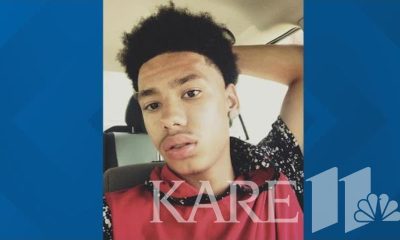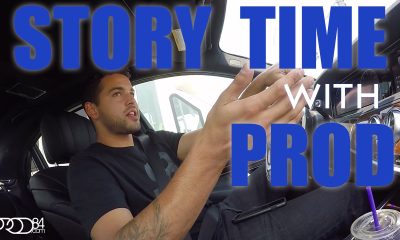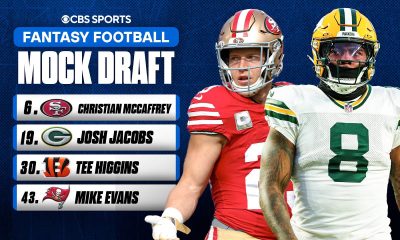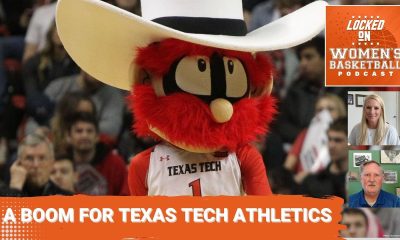NIL
The race to keep up with $40 million rosters is shaking college football
Imagn Images BLOOMINGTON, Ind. — It’s the first day of college football’s spring transfer portal window, players are jumping in left and right, and Indiana coach Curt Cignetti is anxious. Coming off an 11-2 2024 season that included a College Football Playoff berth, life is pretty good in Bloomington. The university and its supporters are committed […]
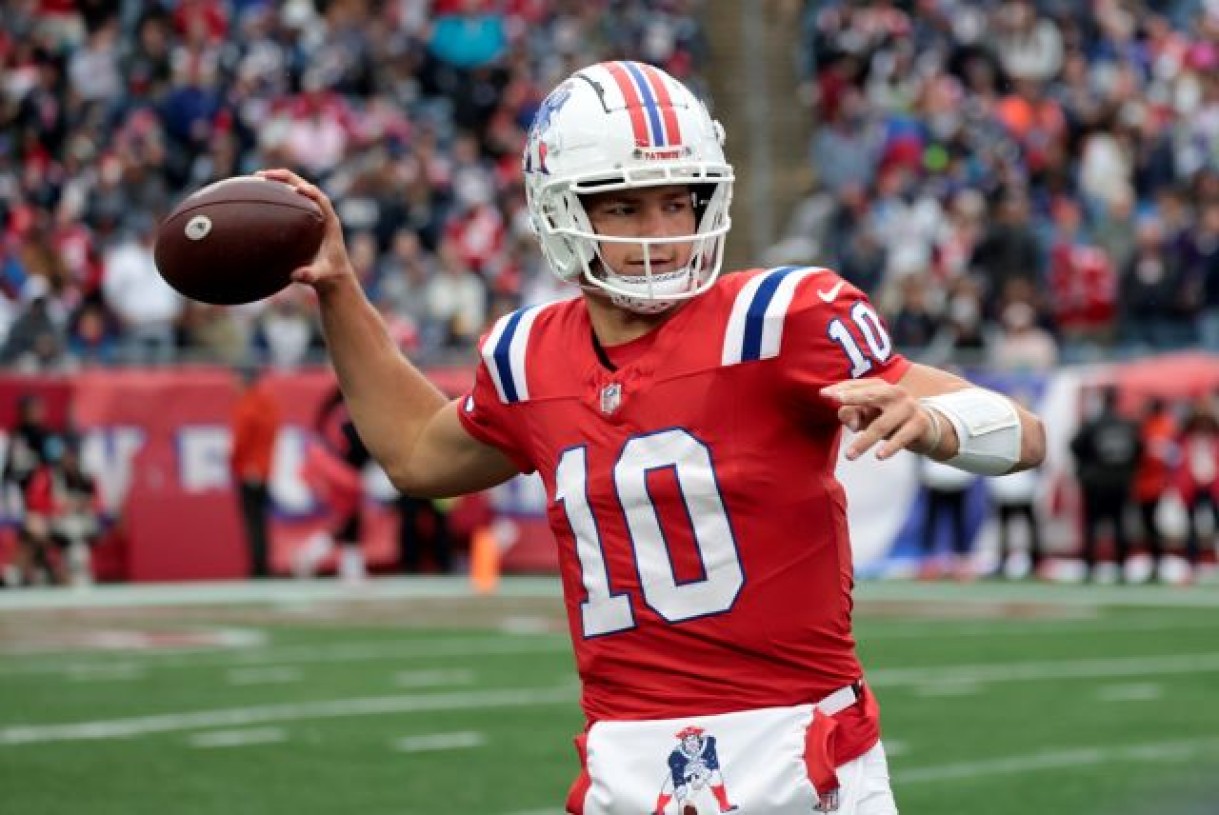
![]()

BLOOMINGTON, Ind. — It’s the first day of college football’s spring transfer portal window, players are jumping in left and right, and Indiana coach Curt Cignetti is anxious.
Coming off an 11-2 2024 season that included a College Football Playoff berth, life is pretty good in Bloomington. The university and its supporters are committed to investing in Indiana football, ensuring it can be more than just a one-hit wonder. With the fiery Cignetti’s unrelenting pursuit of success and the player and coaching talent returning, Indiana will have a real chance at making the College Football Playoff again in 2025.
But Cignetti is still uneasy — and for good reason. Tampering is rampant in college football, and around every corner, a possible enemy lurks trying to poach one of Cignetti’s players. In what was supposed to be a relatively quiet portal period, it has instead been super-charged with football programs making a last grasp at adding as much talent as possible before a likely NCAA v. House settlement that paves the way for revenue sharing.
“This is an unprecedented couple days, weeks, where everybody’s waiting on this rev share, and the five or six out there that have unlimited NIL resources, it’s kind of scary for everybody else,” Cignetti told CBS Sports. “I think our little pot of gold is pretty nice, but we’re not at $40 million. Or $30 million. Or even $25 million.”
A year ago, Ohio State made national headlines when athletic director Ross Bjork said the football program spent $20 million on its eventual national championship-winning roster, but multiple industry sources with knowledge of the market told CBS Sports the top spending programs in 2024 paid upwards of $30 million.
Is Cignetti saying the top of the market is now $40 million?
“Right now, I would say yes,” the Indiana football coach said.
Forty million dollars on a college football roster.
That is four times the new $10 million club at the top of college basketball that CBS Sports’ Matt Norlander detailed last week. One athletic director at a major college program recently told me that the most expensive college basketball roster could be $15 million-$18 million in 2025. Norlander put 10 schools in that exclusive $10 million club: Arkansas, BYU, Duke, Indiana, Kentucky, Louisville, Michigan, North Carolina, St. John’s and Texas Tech.
Cignetti’s proclaimed list of the biggest spenders isn’t as long but there is some overlap with the top basketball budgets.
“I mean if you want to be the best, you got to be able to compete against the best,” Cignetti said. “Right now I understand that is Oregon, Ohio State, Texas. … Texas Tech because of their oil money. I think Notre Dame’s up there pretty good right now, too. Miami, of course.”
Three of those schools rank in the top five of 247Sports’ team transfer portal rankings while Texas has added four Power Four defensive linemen transfers, one of the most expensive positions to grab out of the portal.
“Those people are kind of playing their own game, but you’ve got to be in that next tier,” Cignetti said. “There are enough good ones out there. You’ve got to be able to retain your good ones and then go get what you need.”
By the end of that first day of the spring window, more than 500 FBS players had jumped into the portal with many more to come in the following days. It ranged from starting SEC quarterbacks like Nico Iamaleava to second-team all-ACC receivers like Trebor Pena to star Cal running back Jadyn Ott.
The influx of likely revenue share money with NIL has sent player compensation skyrocketing. This isn’t necessarily new — CBS Sports detailed its impact on the market back in December — but that it has continued into April is, at least partially, because of a 75-year-old federal judge who resides in California.
The $10 million club: College basketball’s portal recruiting hits unthinkable levels of financial chaos
Matt Norlander
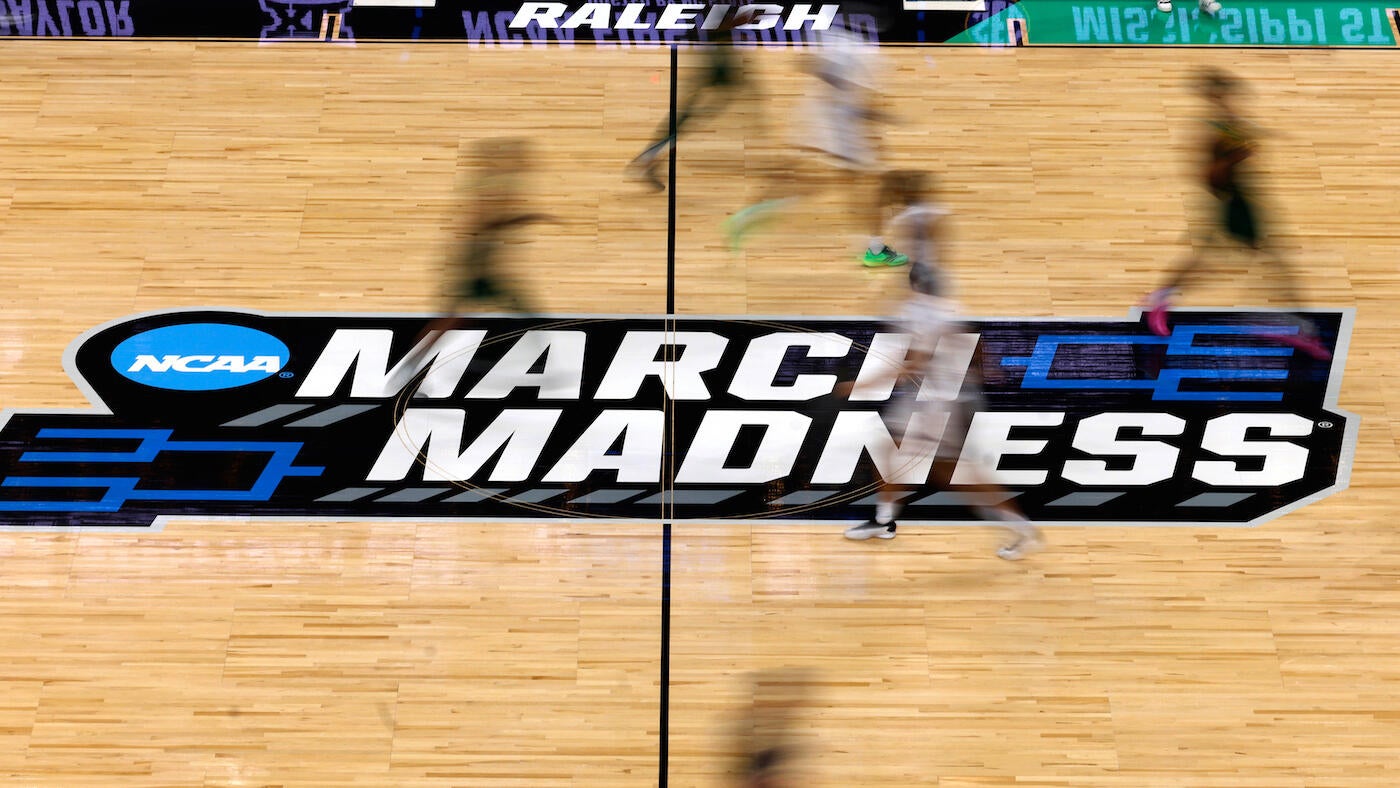
Is the House settlement finally coming?
In the swan song of a long legal career, Judge Claudia Wilken is expected to rule soon on the landmark House case. Multiple college sports executives told CBS Sports they thought it could happen at the end of last week by Good Friday, but when that came and went, the hope is now it’ll be this week.
If Wilken approves as expected, it will set in motion a $2.8 billion settlement and allow schools to begin paying their athletes directly as soon as July 1. Within those terms, schools are expected to have a $20.5 million “cap” in Year 1 to spend on all their athletes, with the specific payout up to each school’s discretion.
There are some notable things to consider out of that basic information.
One, if the top end of last year’s college football market was $30 million and the absolute max a school can spend now is $20.5 million — and no school will spend exclusively on football — something has to give. Either player compensation will have to come down, or schools will have to find a way to make up that money in other areas like NIL. Under the revenue share era, the difference is there will be third-party enforcement of NIL deals to see if they hold up to an ambiguous fair market value.
A Deloitte-administered NIL clearinghouse will weigh in on every NIL deal of $600 or more to determine whether it holds up to a fair market value assessment. There are a lot of different interpretations of what that enforcement will look like (more on that later) but the idea of regulating what has been a free-for-all for years has prompted some programs to be extra aggressive this cycle. The thinking goes that every deal signed before Wilken officially approves the House settlement won’t be subject to any review. It offers potentially the last opportunity to double-dip with unregulated NIL money and the impending revenue share money, allowing for programs to spend tens of millions on their 2025 rosters.
“People are trying to offload money now but this will be the last cycle where guys are getting big paychecks because of rev share,” says South Carolina general manager Darren Uscher.
House v. NCAA settlement: Approval awaits in landmark case as judge digs in on roster limits
Brandon Marcello
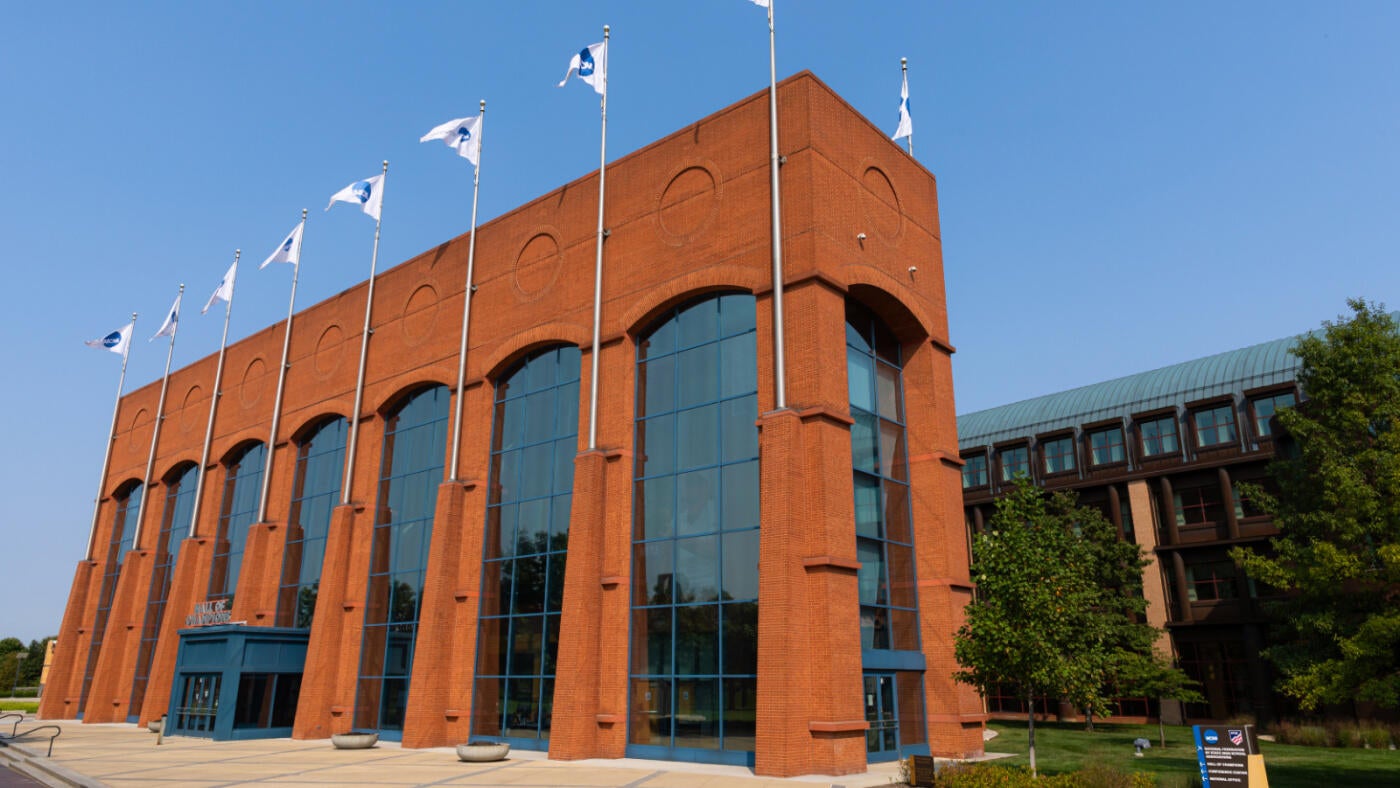
Texas Tech, which currently has 247Sports’ top-ranked transfer portal class, has been the most aggressive ahead of the revenue share era. Its top boosters saw an opportunity, decided that money was no object, and went all-in on landing a class that included recent Stanford transfer edge-rusher David Bailey, who multiple sources said will make more than $2.5 million to suit up for the Red Raiders next season.
“They are insane,” one NIL agent said, almost in awe. “They are crazy and do not care. I think they are like, we have one shot before this gets figured out to build a team, and we’ll just overpay people.”
It’s not just oil money-fueled Texas Tech, though. The agent detailed a recent negotiation with an SEC school for a top tackle. In December, he says, the market for a player of his caliber was in the $1 million to $1.5 million range. Now, it was $2 million to $2.5 million for no reason other than to spend as much money as possible before revenue sharing begins.
“Just raise the number, who cares,” is how the agent described the school’s approach. “Let’s just get him in there.”
Darren Heitner, a prominent sports law attorney, was bombarded with requests in the lead-up to Wilken’s April 7 House hearing. Schools were desperate to get deals finalized ahead of the hearing in case the settlement was approved that day. At a minimum, plenty of schools thought Wilken would rule before the spring transfer portal window opened on April 16, creating an unexpected final opportunity to deploy unregulated NIL money.
Heitner never believed Wilken would make a final ruling that day but happily obliged the requests and tried to extract as favorable terms as possible for his clients in the rushed scenario. The sports law attorney who works with athletes and collectives says there is no consensus among the industry on what it all means. Some schools fear what’s to come and think every deal must be completed before the settlement is approved. Others believe that there’s nothing to worry about as long as they are done before June 30. And the most bullish are skeptical of any enforcement component and will continue operating as they have been. It makes for a muddled market where it’s challenging to sift through what’s real.
“I would characterize it as absolute uncertainty and/or willful ignorance and trying to utilize the uncertainty as leverage when there’s a possibility of doing so,” Heitner said.
Consider Heitner in the skeptical department that the rush to get deals done is necessary.
“At the end of the day, even if Wilken just signed off on this revised settlement agreement, is there any real reason to be fearful of the system that’s going to be implemented?” Heitner said. “Do we really think that spending is going to be decreased as a result? I don’t.”
Are NIL and rev share contracts binding?
Many coaches and administrators hope revenue share agreements will calm a wild market. Currently, there are essentially two free agency periods, including one during the College Football Playoff, that allow players to potentially jump to multiple schools within an academic year.
Tight end Tanner Kaziol transferred to Houston from Wisconsin just last week after playing for Ball State last season. Quarterback Joey Aguilar entered the transfer portal Monday after UCLA recently added Nico Iamaleava. Aguilar, who played at Appalachian State last season, went through spring practice with UCLA but is now headed to Tennessee, the former home of Iamaleava.
Winners and losers from Nico Iamaleava saga: QB overplays his hand, UCLA makes a splash, Tennessee will be OK
Cameron Salerno
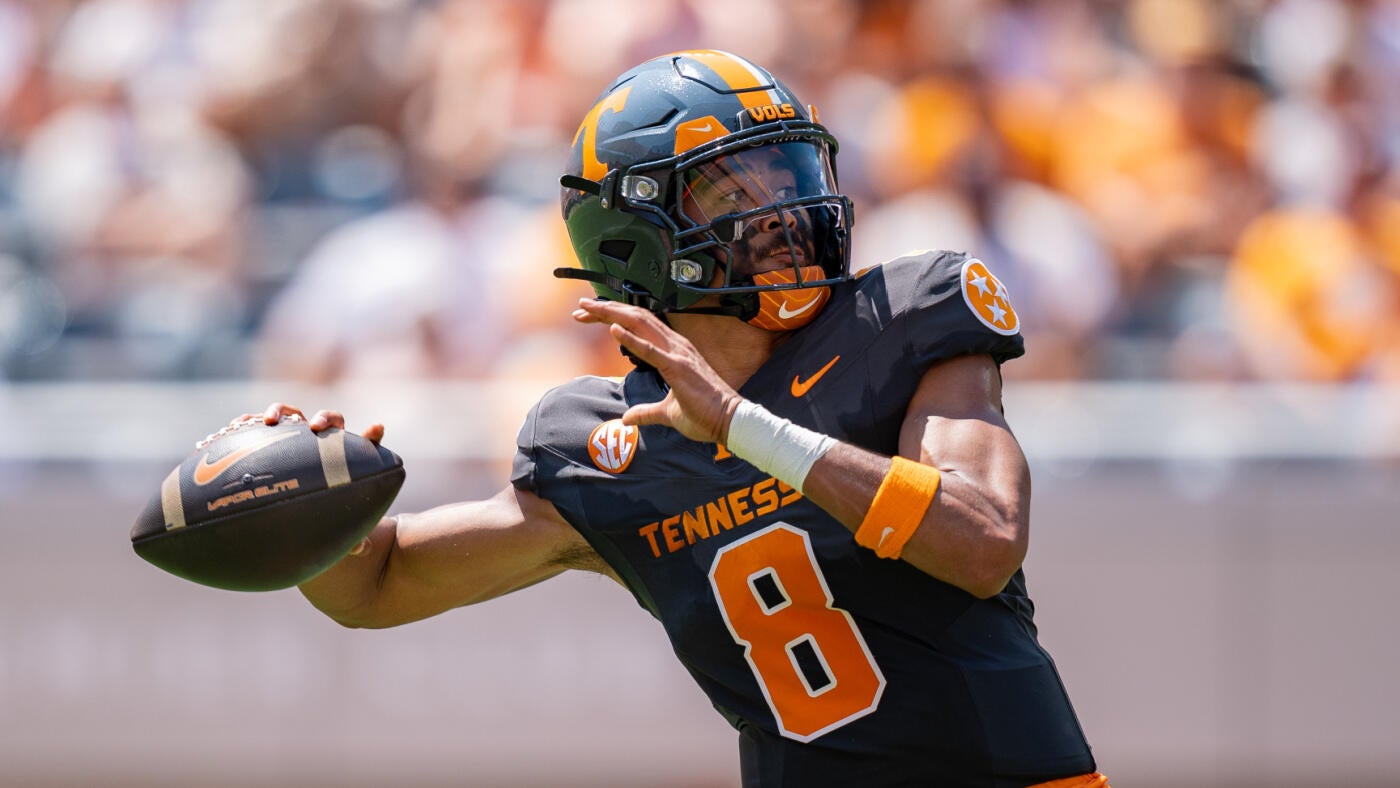
There are numerous other examples of players transferring away from schools before ever playing a game for them.
“Supposedly the thought was when they signed part of what they’re signing is a rev share deal is they are bound, to some extent, to your school,” Cignetti said. “You own their NIL rights. It hasn’t slowed down all these other guys jumping in.”
Miami defensive back Xavier Lucas is believed to be the first one to test the enforceability of the revenue share agreements when he left Wisconsin in January after signing a two-year deal that granted the school the non-exclusive rights to use his name, image and likeness. Wisconsin refused to submit his name in the transfer portal but Lucas went ahead and left the school anyway, enrolling academically at Miami. Heitner, who represented Lucas, had planned to file a lawsuit against Wisconsin for allegedly violating NCAA rules in its refusal to submit Lucas into the transfer portal before he withdrew academically from the school. Lucas, the 20th-ranked transfer player, is projected to be a starter for the Hurricanes in 2025.
The same questions Cignetti raised about rev share deals can be said for NIL agreements. In both college basketball and college football, collectives have devised agreements intended to bind a player to a school and force either the player or the new school to pay out the contract if said player chooses to leave. In a world without player unions and collective bargaining, this is the attempted workaround to bring stability to what is otherwise unregulated free agency all year.
The question is whether any of it is legally enforceable. Mit Winter, a well-known sports law attorney at Kennyhertz Perry LLC, believes they are not.
Arkansas athletics director Hunter Yurahek appears dead-set on finding out, announcing his support for NIL collective Arkansas Edge pursuing the enforcement of “their rights under any agreement violated by our student-athletes. The social media post came one day after backup quarterback Madden Iamaleava followed his brother, Nico, to UCLA
Heitner is currently representing a football player in a similar scenario. The player wants to enter the transfer portal and forfeit any remaining obligations while the collective is trying to enforce clauses within the contract which include liquidated damages. Heitner’s argument is that by leaving now and giving the school a chance to replace the player, “there’s really no harm whatsoever.” Still, like most things within college athletics these days, it’ll take a lawsuit to see what holds up or not. The same could be said for the fair market value assessment where Heitner says he’s already been asked to start preparing a lawsuit to challenge it once the House lawsuit settlement goes through.
Will the House settlement be approved, and if so, when? Can revenue share agreements provide stability to the current unrestricted free agency within college sports? Will the big collectives and NIL money still run the sport or will the new NIL clearinghouse enforcement actually have some teeth to it?
These are all questions coaches and administrators are asking themselves right now. With little clarity or direction, it is up to each individual school and coach to decide what is right and wrong strategically in this new era.
For coaches like Cignetti, coming off a terrific season, there is baited breath trying to get through this final portal window, which closes April 25, with an intact roster against a predatory market looking to pay big money for contributors.
“Right now is a different time,” the Indiana coach said. “These next couple weeks who knows how long until this thing gets passed because there’s some crazy stuff going on.”
NIL
Oregon State charts a new NIL course with general manager, changes at collective
Oregon State athletics is overhauling its structural approach to managing Name, Image and Likeness (NIL) deals for student-athletes. The Beavers announced the hiring of Kyle Bjornstad — a former basketball player and administrator at OSU who founded the Dam Nation collective in 2022 — as the athletic department’s new general manager on Wednesday. Additionally, OSU […]
Oregon State athletics is overhauling its structural approach to managing Name, Image and Likeness (NIL) deals for student-athletes.
The Beavers announced the hiring of Kyle Bjornstad — a former basketball player and administrator at OSU who founded the Dam Nation collective in 2022 — as the athletic department’s new general manager on Wednesday.
Additionally, OSU announced a multi-year deal with marketing agency Blueprint Sports, which will take over operations of Dam Nation moving forward.
Blueprint works with more than 70 athletic departments across the country, having secured and paid out more than $100 million in NIL deals according to its website.
“Blueprint Sports will only increase the impact of Dam Nation as we continue to grow and support NIL opportunities for our student-athletes,” OSU athletic director Scott Barnes said in a release. “For our fans, this partnership will bring new opportunities, events and benefits that we anticipate being a leap forward in their overall experience.”
As GM, Bjornstad will oversee NIL operations for all of OSU’s sports teams, working side-by-side with on-site executives from Blueprint. Justin Johnson from Beaver Sports Properties will take on the role of NIL Business Manager for OSU.
“I think it’s important in this landscape to have fewer cooks in the kitchen,” Bjornstad told The Oregonian/OregonLive in an exclusive interview. “A person in a role like that needs to know every conversation that’s been had with the administration, coaches and the student-athletes along with their representatives. I will take the lead on those conversations.”
The Beavers spent a reported $1.5 million on Duke transfer quarterback Maalik Murphy this past offseason, and have been ramping up their NIL efforts in the wake of the House settlement. That includes “chipping away” at a $20.5 million NIL salary cap outlined in the settlement, Barnes told The Oregonian/OregonLive, but the school has yet to release its official numbers and isn’t expected to come close to college sports’ big spenders.
“I think (the House settlement) provides a school like Oregon State even more solid ground to stand on,” Bjornstad said. “We’ve had tremendous success just running it through the collective, even if a couple years ago we knew it was going to be rough when the Pac-12 did what it did. Some of the kids were leaving. But now, our retention is off the charts across the board. I think it’s a cultural thing. We shoot straight.”
Dam Nation will focus primarily on corporate deals and individual memberships, while Bjornstad’s role includes managing revenue share through OSU’s in-house NIL, built on money from solicited donors.
While the landscape remains unsettled across college sports with various legal challenges and constantly moving goalposts, the foundation of more universally accepted NIL standards should make it easier for schools like Oregon State to compete in the marketplace, Bjornstad said.
“I am beyond optimistic,” Bjornstad said. “Look at the situation we’re in with a sport like baseball. Given everything that has happened, look where we still are. Right where we want to be in Omaha. The football build back after the Pac-12 collapsed and our head coach leaving, now Trent Bray is right there. This (football) roster is going to be really fun and I think we’re going to win a lot of games. And if you look at other sports, like what coach (Scott) Rueck was able to rebuild, and Wayne (Tinkle) wins 20-plus games.
“We’re going to keep doing what we’ve always done: keep grinding and keep growing. And I think our fans should be excited about the future, but I think they should be beyond proud of the storm we’ve been able to weather together.”
Oregon State (0-0) vs. California (0-0)
- When: Saturday, Aug. 30
- Time: 7:30 p.m. PT
- Where: Reser Stadium, Corvallis
- TV channel: ESPN
- Stream: DirecTV (free trial) or Fubo (promotional offers). Streaming broadcasts for this game will be available on these streaming services locally in Oregon and Washington, but may not be available outside of the Pacific Northwest, depending on your location.
- Oregon State football 2025 season schedule, scores
— Ryan Clarke covers the Oregon State Beavers for The Oregonian/OregonLive. Reach him at RClarke@Oregonian.com or on Twitter/X: @RyanTClarke. Find him on Bluesky: @ryantclarke.bsky.social.2
If you purchase a product or register for an account through a link on our site, we may receive compensation. By using this site, you consent to our User Agreement and agree that your clicks, interactions, and personal information may be collected, recorded, and/or stored by us and social media and other third-party partners in accordance with our Privacy Policy.
NIL
Mountaineers Host Manhattan to Open 2025 Campaign
Story Links MORGANTOWN, W.Va. – The No. 16 West Virginia University men’s soccer team opens its 65th season on Thursday, Aug. 21, as it hosts Manhattan at Dick Dlesk Soccer Stadium. Kickoff is set for 3:30 p.m. Nick Farrell and Adam Zundell have the call of Thursday’s contest on ESPN+. The […]
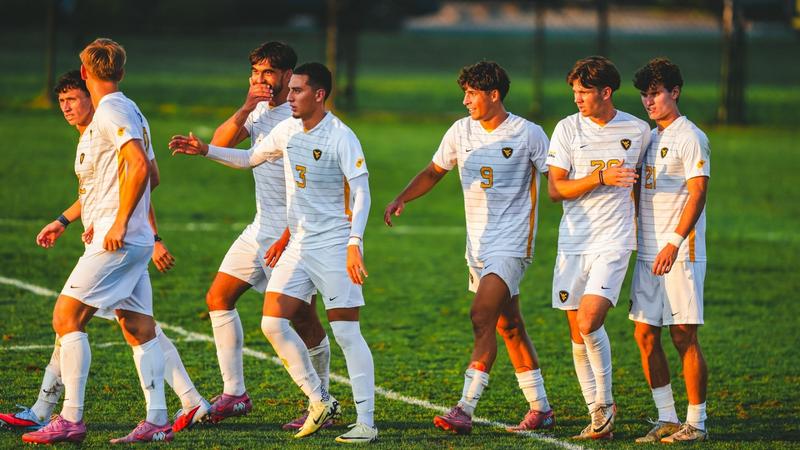
MORGANTOWN, W.Va. – The No. 16 West Virginia University men’s soccer team opens its 65th season on Thursday, Aug. 21, as it hosts Manhattan at Dick Dlesk Soccer Stadium. Kickoff is set for 3:30 p.m.
Nick Farrell and Adam Zundell have the call of Thursday’s contest on ESPN+. The game also can be heard on 91.7 FM (WWVU) in Morgantown, and live stats are available at WVUsports.com.
Fans are encouraged to purchase tickets in advance by visiting WVUGAME.com or calling 1-800-WVU GAME. Tickets for Thursday’s game will be $1 in advance or at the gate. Tickets for WVU students are free with a valid student ID.

Before the gates open, Mountaineer Maniacs have a chance to socialize with games, food and music, and it is the first chance to pick up their Mountaineer Maniac shirt at halftime. Fans are also encouraged to wear white to the game.
The Mountaineers are coming off a 13-2-7 season and won the Sun Belt regular season championship with a 5-0-4 mark before claiming the double with the Sun Belt Tournament title, the first time in program history that WVU has won both in the same season.
Senior Marcus Caldeira returns to the Mountaineers and was named the 2025 Sun Belt Preseason Offensive Player of the Year. In his career, he has 28 goals and eight assists for a total of 64 points. Graduate defender Carlos Hernando and sophomore midfielder Isaac Scheer joined Caldeira on the Preseason All-Sun Belt Team.
West Virginia returns 13 players from last year’s squad, including five players – Caldeira, Scheer, Hernando, defender Tristan Pusztahegyi, and goalkeeper Marc Bonnaire – who started at least 10 games. Caldeira and Bonnaire were both named All-Southeast Region second team by United Soccer Coaches in 2024.
Fifteen newcomers join the fold this season with eight freshman and seven transfers as the Mountaineers had to replace 17 members from last season’s squad.
Manhattan is led by 1st-year head coach Tom Giovatto after serving one season as the LIU women’s head coach and 16 years as the men’s coach at St. Francis Brooklyn. The Jaspers were picked 7th in the 2025 Preseason Coaches poll after going 5-8-3 in 2024 and 3-3-2 in the MAAC.
Ziv Dahan, Henry Hamilton, and Nassim Akki were all named to the Preseason All-MAAC team. Dahan led the Jaspers last season with seven goals. Ludvig Målberg returns to man the goal for Manhattan after starting all 16 matches a season ago.
For more information on the Mountaineers, follow @WVUMensSoccer on Twitter, Facebook and Instagram.
NIL
Memphis athletics, FedEx agree to new on-field sponsorship deal
The University of Memphis has agreed to a new sponsorship deal with FedEx that will include FedEx branding within the end zones − a move believed to be unprecedented in college football and the NFL − at Simmons Bank Liberty Stadium. Financial terms were not disclosed, but the increase in annual money is expected to […]
The University of Memphis has agreed to a new sponsorship deal with FedEx that will include FedEx branding within the end zones − a move believed to be unprecedented in college football and the NFL − at Simmons Bank Liberty Stadium.
Financial terms were not disclosed, but the increase in annual money is expected to be substantial, multiple sources told The Commercial Appeal. The sources requested anonymity because financial details were not released.
“The University of Memphis has a deep appreciation for FedEx and its longstanding commitment to our institution and community,” University of Memphis president Bill Hardgrave said in a press release. “FedEx continues to further establish itself as a leading brand in the future of collegiate athletics. We look forward to seeing one of the world’s most iconic logos in our end zones this fall.”
FedEx signage has appeared inside Simmons Bank Liberty Stadium for years, although never on the field itself. But in June 2024, the NCAA approved a rule change to allow on-field commercial sponsor advertisements for regular-season games. Several schools took advantage during the 2024 season, including DirecTV signage appearing along the end zone out-of-bounds lines at Southern Cal games at Los Angeles Memorial Coliseum.
But it’s believed that no schools have incorporated ad space inside the end zones. That will change beginning with the Tigers’ 2025 season, which begins Aug. 30 (3:30 p.m. CT, ESPN+), when they host Chattanooga.
Memphis’ new arrangement with the Memphis-based logistics giant replaces the previous five-year, $25 million name, image and likeness (NIL) setup that was announced in April 2024.
By shifting the framework of the initial agreement with FedEx, the money Memphis receives from the sponsorship will go toward funding revenue sharing − and will not be subject to review by NIL Go, the NCAA’s new NIL clearinghouse.
“This strategic shift positions Tiger Nation for long-term success in the ever-changing college athletics landscape,” Memphis athletic director Ed Scott said in a press release.
Schools are permitted to share up to $20.5 million in revenue directly with athletes thanks to the House v. NCAA settlement, which passed in June. Without providing specific figures, Scott said previously Memphis will not meet that number for the upcoming athletic season, although it will be at or near the top of the Group of Five and will be “competitive” with Power Four schools.
The new deal with FedEx is only expected to bring the Tigers closer to the $20.5 million mark.
“My goal is to get as close to $20.5 (million) as we can,” Memphis athletic director Ed Scott told The Commercial Appeal during a recent exclusive interview. “I don’t know that we need exactly $20.5 (million) in the American (Conference) to do what we’re trying to do. So, it gives us more time to ramp up.
“We’re not at $20.5 (million) now, but we’re closer to that than we are to not being. We’re in really good shape.”
Work on the restructured deal began prior to FedEx founder Fred Smith’s death on June 21. Its completion reaffirms the company and the Smith family’s commitment to the university.
“We will lose Fred’s ability to call anyone in the world and get them on the phone immediately,” Scott said. “But what we’re not losing the support of the Smith family and of FedEx for the university and for the athletic department. (Smith’s children) Richard (Smith) and Cannon (Smith) and Samantha (Atkinson) and Brad Martin (FedEx chairman of the board) have made that clear. So, as the athletic director at the University of Memphis, I feel we still have a wonderful partnership with them.
“We’re going to miss Fred the person, but we’re going to be able to keep the relationship.”
Scott added Memphis will provide some level of revenue sharing to 15 of the Tigers’ 18 athletic programs. He declined to specify which three will not receive revenue sharing in 2025-26. But he said the football program receives the most, while men’s basketball is second and women’s basketball is third.
“I’m trying to build a comprehensive department and the only way to do that is to invest,” Scott said. “If I’m gonna ask them to win, I’ve got to give them the resources.”
Reach sports writer Jason Munz at jason.munz@commercialappeal.com, follow him @munzly on X.
NIL
Oregon State charts a new NIL course with general manager, changes at collective
Oregon State athletics is overhauling its structural approach to managing Name, Image and Likeness (NIL) deals for student-athletes. The Beavers announced the hiring of Kyle Bjornstad — a former basketball player and administrator at OSU who founded the Dam Nation collective in 2022 — as the athletic department’s new general manager on Wednesday. Additionally, OSU […]
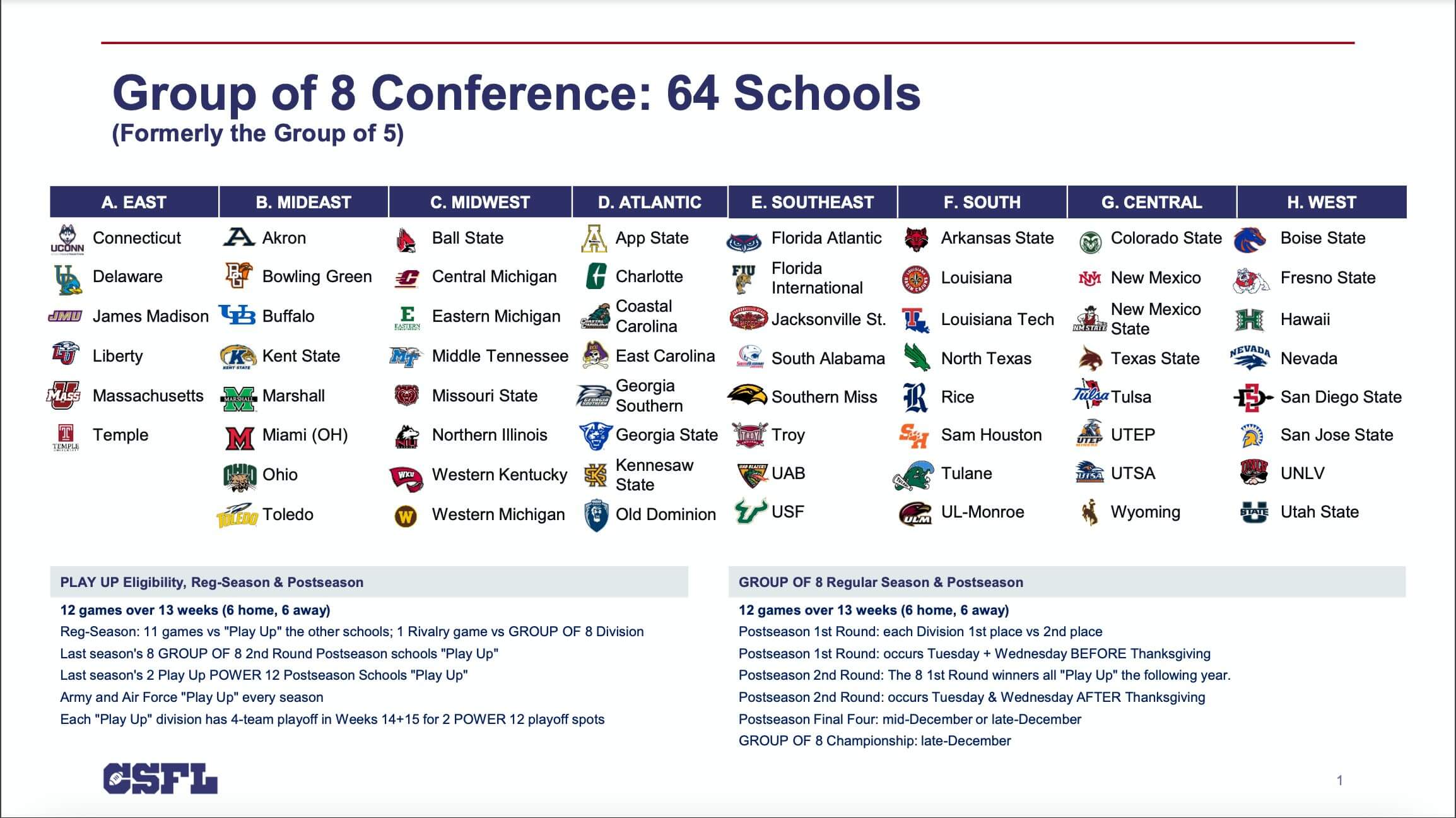

Oregon State athletics is overhauling its structural approach to managing Name, Image and Likeness (NIL) deals for student-athletes.
The Beavers announced the hiring of Kyle Bjornstad — a former basketball player and administrator at OSU who founded the Dam Nation collective in 2022 — as the athletic department’s new general manager on Wednesday.
Additionally, OSU announced a multi-year deal with marketing agency Blueprint Sports, which will take over operations of Dam Nation moving forward.
Blueprint works with more than 70 athletic departments across the country, having secured and paid out more than $100 million in NIL deals according to its website.
“Blueprint Sports will only increase the impact of Dam Nation as we continue to grow and support NIL opportunities for our student-athletes,” OSU athletic director Scott Barnes said in a release. “For our fans, this partnership will bring new opportunities, events and benefits that we anticipate being a leap forward in their overall experience.”
As GM, Bjornstad will oversee NIL operations for all of OSU’s sports teams, working side-by-side with on-site executives from Blueprint. Justin Johnson from Beaver Sports Properties will take on the role of NIL Business Manager for OSU.
“I think it’s important in this landscape to have fewer cooks in the kitchen,” Bjornstad told The Oregonian/OregonLive in an exclusive interview. “A person in a role like that needs to know every conversation that’s been had with the administration, coaches and the student-athletes along with their representatives. I will take the lead on those conversations.”
The Beavers spent a reported $1.5 million on Duke transfer quarterback Maalik Murphy this past offseason, and have been ramping up their NIL efforts in the wake of the House settlement. That includes “chipping away” at a $20.5 million NIL salary cap outlined in the settlement, Barnes told The Oregonian/OregonLive, but the school has yet to release its official numbers and isn’t expected to come close to college sports’ big spenders.
“I think (the House settlement) provides a school like Oregon State even more solid ground to stand on,” Bjornstad said. “We’ve had tremendous success just running it through the collective, even if a couple years ago we knew it was going to be rough when the Pac-12 did what it did. Some of the kids were leaving. But now, our retention is off the charts across the board. I think it’s a cultural thing. We shoot straight.”
Dam Nation will focus primarily on corporate deals and individual memberships, while Bjornstad’s role includes managing revenue share through OSU’s in-house NIL, built on money from solicited donors.
While the landscape remains unsettled across college sports with various legal challenges and constantly moving goalposts, the foundation of more universally accepted NIL standards should make it easier for schools like Oregon State to compete in the marketplace, Bjornstad said.
“I am beyond optimistic,” Bjornstad said. “Look at the situation we’re in with a sport like baseball. Given everything that has happened, look where we still are. Right where we want to be in Omaha. The football build back after the Pac-12 collapsed and our head coach leaving, now Trent Bray is right there. This (football) roster is going to be really fun and I think we’re going to win a lot of games. And if you look at other sports, like what coach (Scott) Rueck was able to rebuild, and Wayne (Tinkle) wins 20-plus games.
“We’re going to keep doing what we’ve always done: keep grinding and keep growing. And I think our fans should be excited about the future, but I think they should be beyond proud of the storm we’ve been able to weather together.”
Oregon State (0-0) vs. California (0-0)
- When: Saturday, Aug. 30
- Time: 7:30 p.m. PT
- Where: Reser Stadium, Corvallis
- TV channel: ESPN
- Stream: DirecTV (free trial) or Fubo (promotional offers). Streaming broadcasts for this game will be available on these streaming services locally in Oregon and Washington, but may not be available outside of the Pacific Northwest, depending on your location.
- Oregon State football 2025 season schedule, scores
— Ryan Clarke covers the Oregon State Beavers for The Oregonian/OregonLive. Reach him at RClarke@Oregonian.com or on Twitter/X: @RyanTClarke. Find him on Bluesky: @ryantclarke.bsky.social.2
If you purchase a product or register for an account through a link on our site, we may receive compensation. By using this site, you consent to our User Agreement and agree that your clicks, interactions, and personal information may be collected, recorded, and/or stored by us and social media and other third-party partners in accordance with our Privacy Policy.
NIL
Why Mark Pope is embracing what others fear
A tale of two philosophies: How coaches are reacting to the NIL and Transfer Portal era College basketball has changed. Anyone who has followed the sport for more than a decade can see it—the transfer portal spins faster than ever, NIL deals are everywhere, and the traditional idea of the student-athlete has shifted into something […]
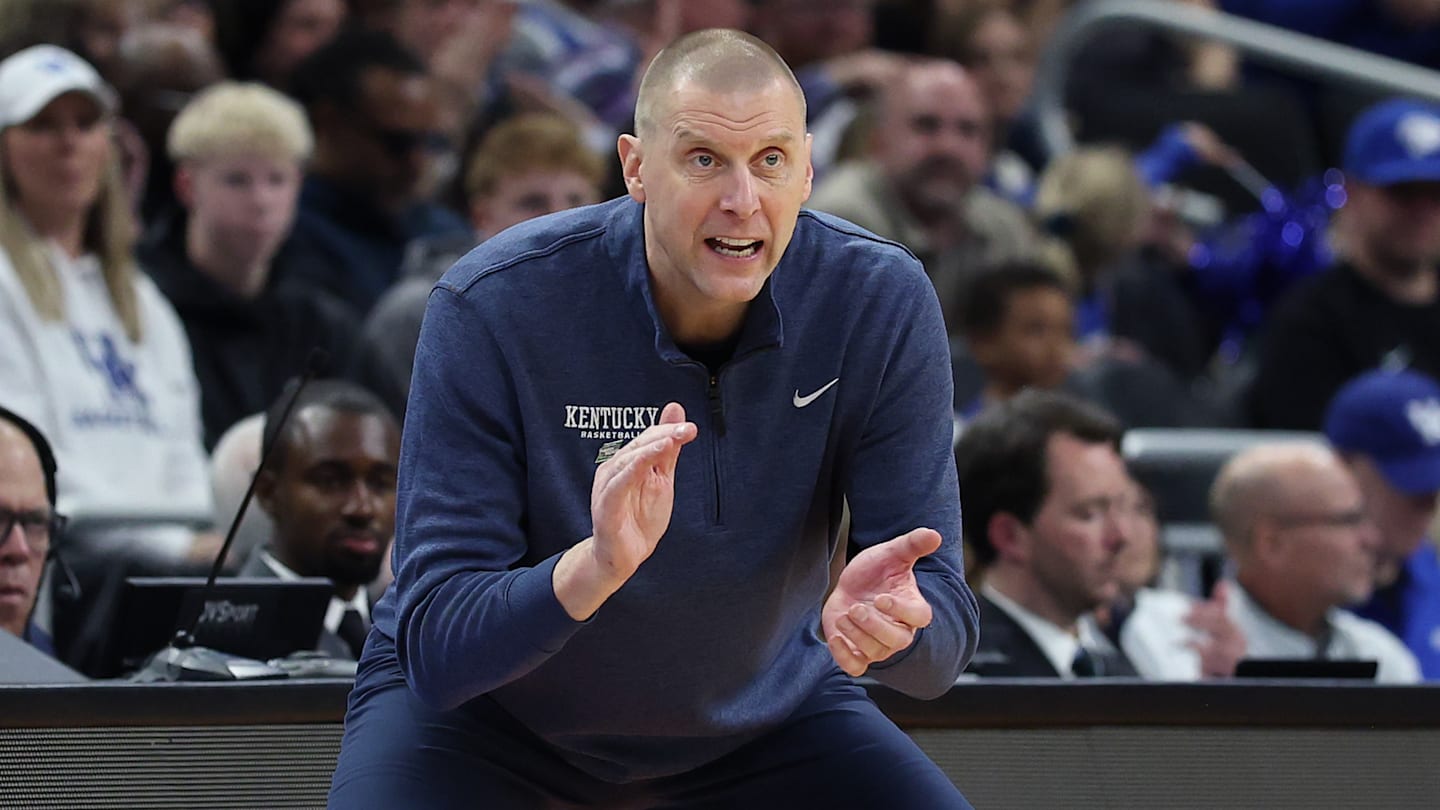
A tale of two philosophies: How coaches are reacting to the NIL and Transfer Portal era
College basketball has changed. Anyone who has followed the sport for more than a decade can see it—the transfer portal spins faster than ever, NIL deals are everywhere, and the traditional idea of the student-athlete has shifted into something new. Coaches across the country are adjusting, sometimes reluctantly, to an era where rosters are built overnight and agents play as big a role as assistant coaches.
But while many legends of the game are airing their grievances, Kentucky head coach Mark Pope is embracing the challenge head-on. He isn’t crying about the new world of college basketball—he’s leaning into it.
“I believe it’s the greatest time to be a college coach,” Pope said recently. “It’s the most challenging, but also the most rewarding. … The players need us more than ever before.”
That single line defines Pope’s approach. While others see chaos, he sees opportunity. While some call it the end of college hoops as we knew it, Pope calls it the beginning of something greater.
A new era, a divided response
The landscape is undeniably different. In 2025 alone, over 2,600 players entered the college basketball transfer portal—a record number that underscores how fluid rosters have become. For context, that’s more than seven full rosters’ worth of talent hitting the open market. On top of that, NIL collectives and third-party handlers now operate as a major factor in recruiting and roster management.
This isn’t the world John Wooden coached in. And for many veteran coaches, it’s not a world they particularly like.
Michigan State’s Tom Izzo is one of the most respected voices in the game, but he hasn’t hidden his frustration with the system.

“I’m still fist-fighting the fight,” Izzo recently said to Yahoo. “I still want to help kids live their dream… All the right reasons.”
Yet Izzo didn’t mince words when it came to the direction of the sport. “It was set up poorly by the people in charge,” he said, specifically pointing at the NCAA’s lack of leadership that allowed outside influence to take over.
His biggest concern? The “middlemen” now surrounding players, often more interested in short-term paydays than long-term development. For Izzo, who has led Michigan State to 25 straight NCAA tournaments, the frustration isn’t about athletes making money—it’s about losing the purity of what he believes college basketball should stand for. Many fans would agree.
Nick Saban’s warning shot
It’s not just basketball voices weighing in. Nick Saban, who retired from Alabama after rewriting the record books in college football, offered a stark perspective before stepping away.
“All the things that I believed in for all these years, 50 years of coaching, no longer exist in college athletics,” Saban said. “It was always about developing players. It was always about helping people be more successful in life.”

Saban, who built Alabama into the gold standard of college football, expressed frustration with what he sees as a pay-for-play model replacing the old system. “It’s whoever wants to pay the most money, raise the most money, buy the most players is going to have the best opportunity to win,” he said. “I don’t think that’s the spirit of college athletics.”
His wife, Terry, even noticed the cultural shift at their famous Sunday breakfasts with recruits. “All they care about is how much you’re going to pay them,” she told him. For Saban, that was the red alert: the game was no longer about development, and that stung.
Steve Alford: “It’s ridiculous”

Meanwhile, Nevada head coach Steve Alford has voiced his own dismay.
“Five years ago, I wasn’t in conversation saying, ‘How much do you want to be paid?’” Alford said. “I never thought that would happen in college basketball. … The way it is now is ridiculous. It’s utterly ridiculous. And it’s changed our game.”
Alford admitted coaches have no choice but to adapt, but he emphasized the chaos: “You’re going to have to replace eight, nine guys to a roster every year. The travel time that is across the country in these leagues, it makes no sense for that to be our model. But that is our model.”
He isn’t wrong—college basketball today looks a lot more like junior college turnover, with rosters being reassembled each spring and summer. He also brought up APR (Academic Progress Report) and how education is now a backseat to how much NIL players can get. Are colleges now just vehicles for money? When so few athletes go pro, are we failing the kids in not educating them?
Pope’s perspective: A different lens
This is where Pope stands apart. Instead of joining the chorus of complaints, he is taking the opposite stance.
Yes, the game is changing. Yes, it’s harder to build continuity, to teach four-year systems, to know what your roster will look like six months from now. But Pope refuses to let those challenges steal the joy of coaching.

“I think our players need us now more than ever,” Pope emphasized. Players are navigating things that none of us navigated at their age. And if we can be there to help them grow, both on and off the court, then this can be the most rewarding era of coaching we’ve ever seen. Just look at Trent Noah and how much he has developed.
This outlook isn’t just about optimism—it’s about strategy. By embracing the realities of NIL and the portal, Pope is positioning Kentucky to thrive in the modern era rather than fall behind.
Kentucky’s advantage: Tradition meets modern
Kentucky basketball is no stranger to reinventing itself. Under John Calipari, the Wildcats became the poster child for the “one-and-done” era, sending lottery picks to the NBA year after year. Calipari leaned into the changing recruiting environment and made it work, winning the 2012 national championship and reaching four Final Fours.
Now, Pope is tasked with leading Kentucky through the next era of upheaval. And much like Calipari did in 2009, he seems ready to make Kentucky a trendsetter once again.

The Wildcats remain one of the biggest brands in sports. NIL collectives are strong, the fan base is unmatched, and the program’s prestige means players can build their personal brand in Lexington like nowhere else. Pope’s refusal to resist change plays directly into those strengths.
Why attitude matters
In coaching, attitude trickles down. A coach who views NIL and the portal as a burden communicates that frustration to his staff, his players, and even his recruits. But a coach who embraces it creates an atmosphere of growth and adaptability.
Consider the numbers:
- Over 2,600 players in the 2025 portal.
- Nearly 20% of all Division I scholarship players changed schools last offseason.
- NIL valuations for top college stars now reach into the seven figures, according to On3’s NIL database.
That isn’t going away. The portal isn’t closing. NIL isn’t shrinking. The coaches who survive and thrive are those who can adapt and build within the system rather than fight against it.
Pope is proving that mindset matters as much as system. And in a sport as passionate and volatile as college basketball, that could make all the difference.
A glimpse at the future
So what does the future of college hoops look like? Probably more chaotic before it becomes stable. Lawsuits are ongoing about athlete employment status. Revenue-sharing models are being debated. And with every year, more and more players test the portal waters.
But Pope’s stance offers a lesson: the future isn’t to be feared, it’s to be shaped.
He may not have the Hall of Fame résumé of Izzo or the national titles of Saban, but Pope has something just as valuable in this moment—vision. He sees the mess and refuses to complain. He sees the challenge and refuses to back down.
Or, as Tom Petty might say: he won’t back down.
Conclusion
In this new world of college basketball, many coaches are asking what the game has lost. Mark Pope is asking what it can still become.
As Izzo, Saban, Alford, and others raise their concerns, Pope is building a blueprint for the next decade of coaching—one rooted in adaptability, opportunity, and belief in the players he leads.
And at Kentucky, that might be the edge the Wildcats need to stay on top of a sport that refuses to stop evolving.
Drew Holbrook is an avid Kentucky fan who has been covering the Cats for over 10 years. In his free time, he spends time with his family, and watching Premiere League soccer.
NIL
Georgia Bulldogs RB Nate Frazier inks new NIL deal
Beats by Dre has announced their third class of “Beats Elite”, the company selects a handful of college football players to represent their branding. One of the athletes featured in this year’s class is Georgia Bulldogs star sophomore running running back Nate Frazier. Frazier is one of nine players to be included in the company’s […]

Beats by Dre has announced their third class of “Beats Elite”, the company selects a handful of college football players to represent their branding. One of the athletes featured in this year’s class is Georgia Bulldogs star sophomore running running back Nate Frazier.
Frazier is one of nine players to be included in the company’s promotion this year and was recently featured on the company’s Instagram with headphones that are Georgia themed. Frazier signed a names, image and likeness deal with Beats. He is also a native of Compton, California, the same city where Beats founder Dr. Dre is from.
No financial details of Frazier’s NIL deal are known at the time. Interestingly, Georgia football’s official social media account promoted Frazier’s deal.
Fans and many analyst have high expectations for Frazier, who is a third-team All-SEC selection. He was an important part of the Georgia offense last year and his role has grown after the departure of Trevor Etienne. Frazier scored a touchdown when he touched the football 10 or more times every time last season except for once. Hopefully Frazier’s production stays the same and he improves his ball security issues.
The other Beats athletes
- Alabama WR Ryan Williams
- Ohio State S Caleb Downs
- Michigan QB Bryce Underwood
- Texas DL Collin Simmons
- Oregon QB Dante Moore
- Florida QB D.J. Lagway
- Oklahoma QB John Mateer
- South Carolina QB LaNorris Sellers
Follow UGAWire on Instagram or Threads for more Georgia football coverage!
-

 Health3 weeks ago
Health3 weeks agoThe Women Driving A New Era In U.S. Ski & Snowboard
-

 NIL3 weeks ago
NIL3 weeks agoESPN Announces 'dont wait run fast' by mgk as New College Football Anthem for 2025
-

 Rec Sports2 weeks ago
Rec Sports2 weeks agoSwimming & Diving Comments on the Rules – 2025-26
-

 Rec Sports2 weeks ago
Rec Sports2 weeks agoSternberg named new youth center director | News, Sports, Jobs
-

 Technology2 weeks ago
Technology2 weeks agoAmid Sports Chaos, ‘Known’ Data and Outcomes Help Agency Win
-

 Youtube3 weeks ago
Youtube3 weeks ago🚨 BREAKING NEWS 🚨 Micah Parsons requests trade from the Dallas Cowboys | SportsCenter
-

 Motorsports4 days ago
Motorsports4 days agoNASCAR’s Bold Sponsorship Move: Anduril Steps into the Fast Lane as Defense Technology Meets Racing Dram
-

 Health1 week ago
Health1 week agoClinical psychologist discusses student
-

 College Sports3 weeks ago
College Sports3 weeks agoRep. Pugh: The Red Sand Project brings awareness to ‘very serious issue’
-

 College Sports3 weeks ago
College Sports3 weeks agoPrime Video's new Tom Brady sports documentary Built in Birmingham premieres today




